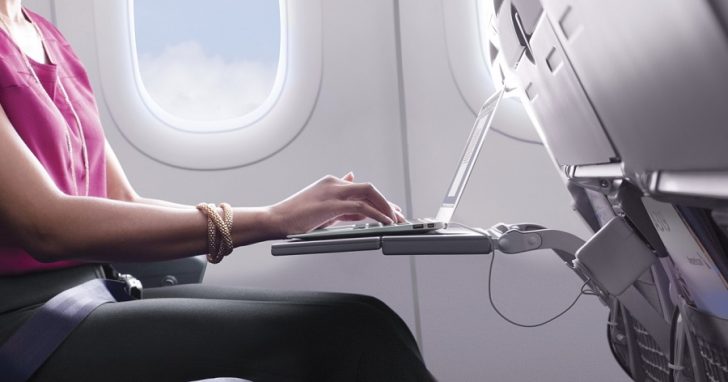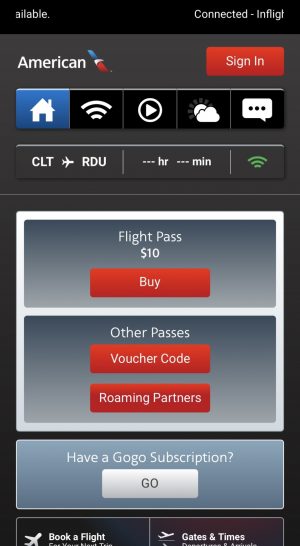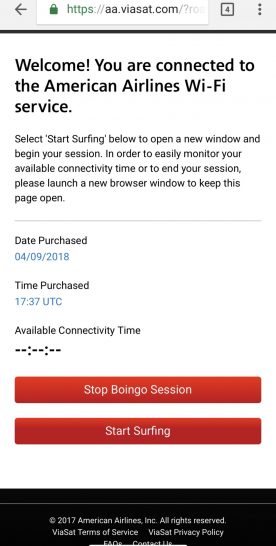American Airlines was Gogo’s first customer back in 2008. While every mainline AA flight has WiFi, as do larger regional jets, most planes have the original Gogo air to ground technology, which is very slow. Some call it GoSlo, which describes how it works. Granted, the ability to get online while on board a moving airplane is still pretty impressive, but like many things, technology has advanced, and Gogo’s old technology is out of date.
I’m a relatively late convert to the onboard WiFi bandwagon. I used to use it sparingly, now I rarely fly without it. I recently even tried out satellite WiFi on Lufthansa’s short haul fleet. Some of that is due to the relative ease of connecting with various subscription plans. Now I have a corporate iPass plan that allows connections on many carriers and multiple connectivity providers. That said, iPass doesn’t seem to work currently on American planes equipped with Viasat, thankfully, there are still other options.
American has started taking deliveries of the 737 Max 8 with Viasat wifi, has converted a few planes in their existing fleet as well. Eventually many planes in their domestic fleet with convert from Gogo to Viasat. There are also a few planes that will stay with Gogo, but upgrade to their faster 2Ku system. Currently, most planes in the domestic fleet still have Gogo, but I recently noticed the large radome on top of my plane at the gate. I checked the (unofficial) American Airlines fleet page, and found that this indeed was a plane equipped with Viasat. I was excited to try it out.
Connecting to Viasat WiFi Onboard American Airlines
Once on board my flight, connected to the AA Inflight wifi network, and attempted to connect. I am pleased to notice that this worked at the gate. I was able to connect right away, and stayed connected during taxi, takeoff, inflight, and after landing.
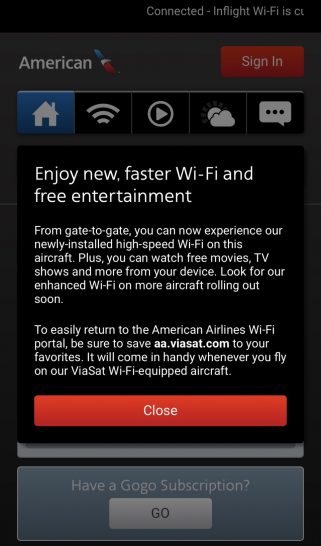
There are several connection options. A flight pass is $10, plus there are codes that could be used. There are roaming partner options, which includes Boingo. Keep mind several American Express cards offer Boingo memberships for cardholders. I (rarely) use a Boingo account from my SPG Amex card, and this allowed me to connect for free. Even if one pays on a per flight basis, $10 per flight is a decent deal. This price is typically much cheaper than gogo, and service is drastically faster. Plus, using my Boingo credentials, I could connect on multiple devices. I no longer maintain a Gogo account, so I couldn’t test functionality by this method.
Note: a recent flight on a Viasat plane (early October 2018) I was unable to connect with my Boingo credentials. It seems that this window has closed.
The somewhat more unique offering is that American allows those with Gogo subscriptions to get free access on Viasat equipped planes. Of course, AA has dropped Gogo as their exclusive carrier for domestic flights, and will be installing Viasat in much of their domestic fleet. We’ll see how long this lasts.
How Fast Is Viasat WiFi?
Once connected, I did a few speed tests to see how fast things went, as well as send some emails, etc. My trip was short, around 30 minutes in the air, so I couldn’t do too much testing.
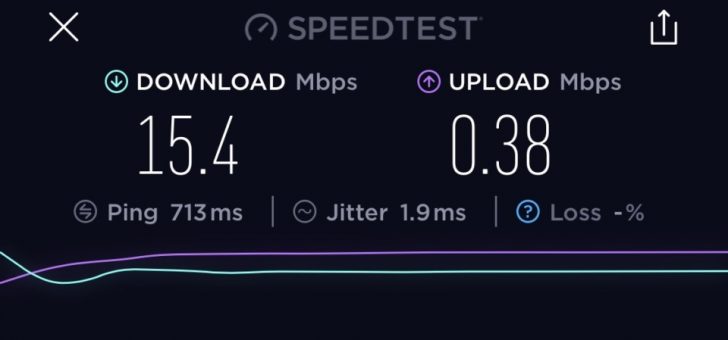
Based on these metrics, download speeds are quick, but upload values are low. I’m not enough of a networking expert to know exactly why that is, but the connection I speed I experienced seemed extremely fast. And the experience on this Viasat plane was drastically faster than using Gogo, so I don’t think these values are necessarily the best way to benchmark connection speed.
Final Thoughts on Viasat Wifi on American Airlines
This is a big improvement for in flight WiFi on American domestic flights. Supposedly there is sufficient bandwidth on these satellite equipped planes to stream video. I did not have time to test this out. Undoubtedly, this is clearly better than older ground based technology.
Have you tried Viasat wifi on American flights? What has been your experience?

